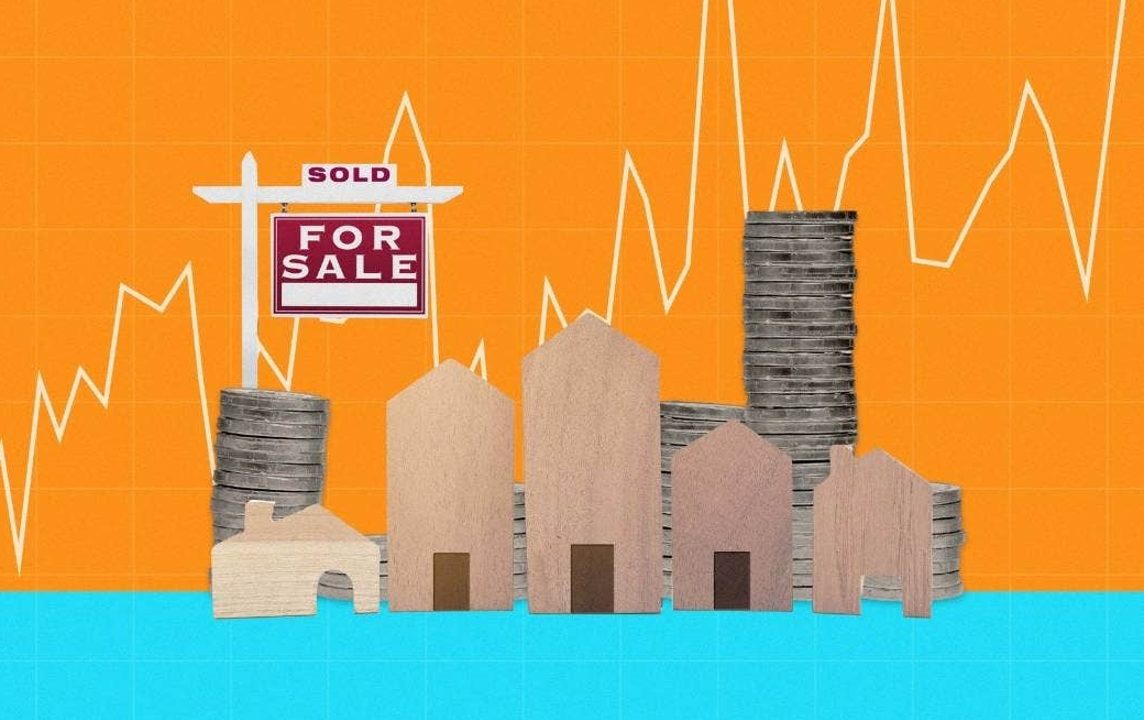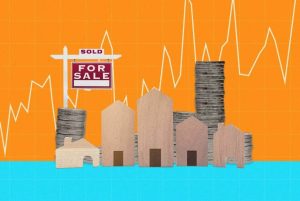
ANZ: House prices going up faster than we thought
ANZ says it now expects house prices to lift about 4% over the second half of this year, and to continue to rise at their current pace until autumn next year.
Previously, the bank had predicted growth would be 3% and then flatten in 2024.
The bank’s economists said the house price cycle had clearly turned and prices had been “marching upwards” over the past few months.
They expect the median house price nationwide could hit $812,000 at Christmas, from $780,000 now.
While indicators signalled things were far from “hot”, they said, things were heating up.
“Indeed, all turnarounds must start somewhere and there are plenty of green shoots to be found in the August Reinz data. In each of the last three months, the house price index has risen 0.7% month-on-month, which is 8% annualised. Close to 100,000 net migrants have entered New Zealand over the last year and that demand for housing is not being matched by supply.”
But they said house price increases would cool over the latter part of 2024 as unemployment rose and interest rates remained high.
“Our outlook is for annual house price inflation to come in at around 5% over 2024 and then moderate to around 3% in 2025. If upside housing pressures result in upside CPI inflation pressures, the Reserve Bank is likely to respond with hikes, stopping the housing upswing in its tracks.”
They noted that borrowers would still find the cheapest interest rates in the longer fixes.
“That will suit those who believe the Reserve Bank could either hike again or leave the OCR on hold ‘up here’ at 5.5% for some time, but it won’t suit those fixing for shorter periods in the hope the Reserve Bank might cut soon.”
ANZ’s economists said they expected one more OCR hike.
While there were risks to that view, they said, the domestic economy was not cooling as fast as the Reserve Bank needed it to.
“For us, that’s enough to make it worth considering fixing for longer rather than shorter. Long-term fixed rates are already lower and thus provide immediate benefits, whereas fixing for shorter will only end up being cheaper if mortgage rates start to fall.”
The one-year rate would need to fall from its current 7.29% to 6.61% in a year’s time, and then 6.3% in two years, for back-to-back one-year fixes to be a better option thatn fixing for two years at 6.95% or three years at 6.73%.
“That might happen but it’s a reasonably aggressive assumption and it’s a steeper assumed decline than we are projecting. Given the choices available, fixing for two or three years may represent a ‘happy middle ground’ for borrowers.”
They said fixing for four or five years might feel too long “given how deep into the cycle we already are”.
A mix of terms could be a good way to hedge a borrower’s bets, they said.
They noted that first-home buyers were back in the market. Data shows they are at their highest market share on record.
ANZ said they tended to be income-rich and asset-poor, with good jobs but had struggled to meet deposit requirements in 2021.
“While house prices have been falling, prospective buyers have been growing their deposits and may have been holding off buying in case house prices fell further. Now that house prices are 14.5% below their peaks, the deposit first-home buyers require is looking more attainable.”
A house that would have sold for $700,000 in November 2021 might only go for $600,000 today, shrinking a 20% deposit from $140,000 to $120,000.
But ANZ said some first-home buyers could not afford to service a 7% mortgage rate, even if they had a deposit.
A $600,000 house on a 7% interest rate would cost $2800 a month in interest payments with an 80% loan, double the $1400 required to buy a $700,000 house when rates were around 3%.
“In a nutshell, the constraint on first-home buyers entering the market has switched from deposit size to servicing cost as house prices have fallen and mortgage rates have risen.”

ANZ: 주택 가격, 예상보다 빠른 상승
ANZ은 올 하반기 동안 주택 가격이 약 4% 상승할 것으로 예상하며, 이러한 현재 속도로 내년 가을까지 상승할 것으로 예상한다고 발표했다.
얼마전 까지만 해도 ANZ 은 올 해 3%의 주택 성장률을 보인 뒤 2024년에 안정화될 것으로 예상했었다.
ANZ 은행의 경제학자들은 주택 가격 사이클이 분명히 바뀌었으며 지난 몇 달 동안 가격이 “상승해 왔다”고 밝혔다.
그들은 전국 중간 주택 가격이 현재 78만 달러에서 크리스마스에는 81만 2천 달러에 달할 것으로 예상하며 부동산 지표들이 “뜨거운” 정도는 아니지만, 상황이 뜨겁게 진행 중이라고 밝혔다.
“실제로, 8월 Reinz 데이터에서는 많은 긍정적인 신호가 나타나고 있다. 지난 3개월 동안 주택 가격 지수는 월간 0.7%씩 상승하며 연간 8% 상승률이었다. 지난 1년 동안 10만 명 가까이의 순 이민자가 뉴질랜드에 들어오며 주택 수요는 공급에 부합하지 않고 있다.”
그러나 그들은 실업률이 상승하고 이자율이 높아진다는 조건하에 2024년 후반부에 주택 가격 상승률이 둔화될 것으로 예상했다.
“2024년 주택 가격 인플레이션은 약 5% 정도일 것으로 예상되며, 그 후 2025년에 약 3%로 둔화될 것이다. 주택 압력이 소비자 물가 상승 압력을 초래하면, 중앙은행은 주택 시장의 상승을 막기 위해 이자율 인상을 할 것으로 예상하기 때문이다.”
ANZ은 대출자들에게 더 길고 더 저렴한 이자율을 찾으라고 조언했다.
“이것은 중앙은행이 이자율을 다시 인상하거나 OCR을 5.5%로 ‘고정’으로 둘 것으로 기대하는 사람들에게 적합할 것이다. 그러나 중앙은행이 이자율을 곧 인하할 것에 대한 기대로 짧은 기간에 고정하려는 사람들에게는 적합하지 않을 것이다.”
ANZ의 경제학자들은 OCR 인상을 한 번 더 예상한다고도 밝혔다.
OCR 인상에 대한 위험도 분명 있지만, 아직은 국내 경제가 중앙은행이 필요로 하는 속도로 식을 정도가 아니기 때문이다.
“우리에게는 이것이 짧은 것보다는 긴 기간으로 고정하는 것이 가치 있는지 고려할 만하다고 생각하고 있다. 장기 고정 금리는 이미 낮기 때문에 즉시 혜택을 제공하며, 그와 반대로 짧은 기간으로 고정하면 모기지 금리가 내려가기 시작할 때만 저렴해질 것이다.”
ANZ의 경제학자들은 “뉴질랜드는 이미 부동산 시장 사이클의 깊숙이 진입한 만큼” 4년 또는 5년 동안 고정하는 것이 너무 길게 느껴질 수 있다. 그래서 대출금의 일부는 길게 다른 일부는 짧게 하는 등 기간을 혼합하는 것이 좋은 방법일 수 있다고 조언했다.
그들은 첫집 구매자들이 시장으로 돌아왔다고 언급했는데 ANZ 데이터에 따르면 첫집 구매자들은 역대 최고 시장 점유율을 가지고 있다.
ANZ은 그들이 소득 비용은 높고 충족되지만 자산은 부족했다며 좋은 직장을 가지고 있지만 2021년에 예치금 요구 사항을 충족하기가 어려웠었던 경향이 있었다고 말했다.
“주택 가격이 하락하면서 잠재적인 구매자들은 예치금을 늘리고 주택 가격이 더 떨어질까 봐 구매를 미루었다. 이제 주택 가격이 최고치 대비 14.5% 하락한 상태에서, 첫집 구매자들이 필요로 하는 예치금은 더욱 달성 가능해 보인다.”
2021년 11월에 70만 달러에 팔렸을 주택이 지금은 60만 달러에 팔릴 수 있으며, 예치금 20%는 14만 달러에서 12만 달러로 줄어들었다.
그러나 ANZ은 일부 첫집 구매자들이 예치금을 갖고 있더라도 7%의 모기지 이자율을 감당하기에는 어렵다고 우려했다. 주택 가격이 하락하고 모기지 이자율이 상승함에 따라 시장 진입에 대한 제약이 이전에는 예치금을 마련하기 어려워서 였다면 현재는 이자 상환 비용 문제로 전환되었다.
80% 대출을 받은 60만 달러짜리 주택 소유주는 7%의 이자율을 적용하면 매달 2800달러의 이자를 지불해야 하는데, 70만 달러짜리 주택을 이자율 3%일 때 구매했다면 1400달러의 이자만 지불하면 됐었던 것에 비하면 두 배의 이자를 지불해야 하는 것이다.
